The Nikon 200 f2 VRII is two things. One of the best lenses I’ve ever used and, as this review will detail, one of the most annoying lenses I’ve ever used. I’ve long wanted one, but it’s already a niche lens, more aimed at low light sports and candid portrait photography. Trying to find a genuine way in which it suits wildlife isn’t easy. But when I paid a visit to Skomer Island, I knew if there was one place this legendary bit of kit could work well, it was this. And so, I promptly hired one.
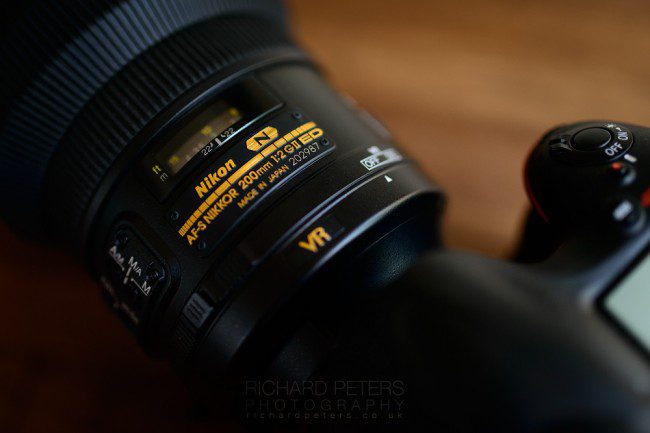
The Nikon 200 f2
This isn’t a particularly technical review. The finer aspects can be found elsewhere and we all know it’s one of Nikon’s sharpest optics. It’s built like a tank, it’s hugely expensive etc etc, repeat repeat repeat. Instead, I want to talk a little about how I found it handled in real world use. I wanted to satisfy for myself, the question I’d had for some time, is the 200 f/2 any use as a wildlife photography lens?
The 200 f2 ergonomics
The first thing that strikes you when you pick up the 200 f2, is how heavy it feels. It is heavier than it looks like it should be. Being a fraction shorter than the 70-200 but wider, gives it a very stubby look and I think it’s that short length that fools you in to thinking it’ll be lighter than it is. But as heavy lenses go, you really do feel like you’re lifting every gram of it’s 2.9kg mass! It will be interested to see how the FL version of this lens compares when it inevitably comes out, if the recent 400 f2.8 FL weight reduction is anything to go by, it could be quite substantially lighter.
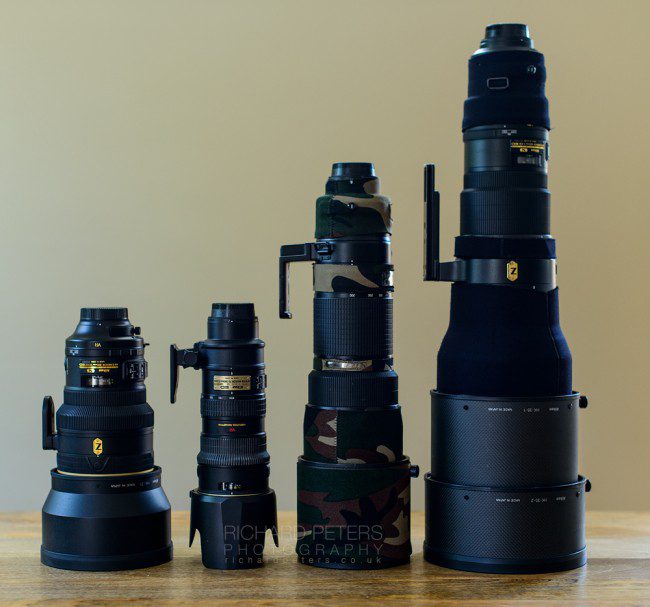
Comparing the 200 f2 in size
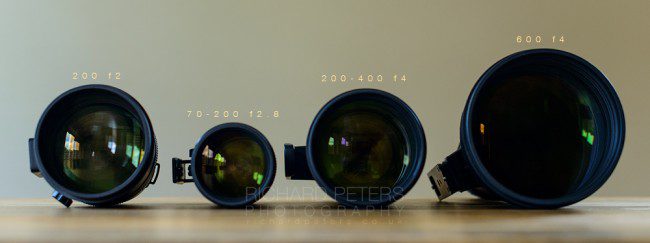
Front Elements comparison
Of course, all the exotic telephoto’s are heavy, so this isn’t really a big surprise, but I think the major factor in noticing the weight, lay in the ergonomics when hand holding.
There’s a very simple reason for this. The lens foot is both small and barely sticks out. This is a lens foot designed only to be a tripod mount, not a carry handle. When the lens hood is reversed for storage, it flares out and just barely covers the foot. If that foot was any taller to allow for handle like grip, the hood would need to be much bigger than required. A (much) longer replacement foot would help, but the clearance to get your hand round it would be tight at best, add gloves to the mix and you’re back to square one.
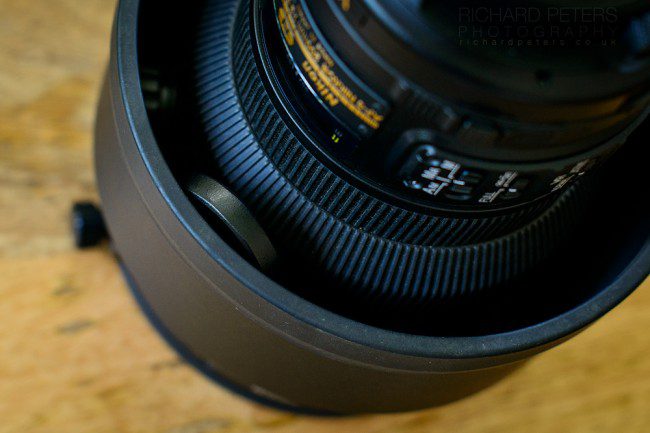
The smallest of lens feet
In the field, this makes moving about or crawling in to position with the 200 f2 feel very awkward. In most cases I found myself holding the lens by the focus ring whilst shuffling about on the floor, which just doesn’t feel right. Plus, doing this has the added issue of the depth of field being shifted about all over the place when I next put my eye to the viewfinder.
[clickToTweet tweet=”The Nikon 200 f2. It may not be the easiest lens to work with but the results are stunning.” quote=”The Nikon 200 f2. It may not be the easiest lens to work with but the results are stunning.”]
On the same subject, when hand-holding this lens, you’re supporting it by the focus ring. And, with that super narrow depth of field on offer, it is quite easy to shift the focus slightly and render the subject not quite sharp. One option is to use the foot as a buffer and rest your hand on that. It’s not the most comfortable solution, and you’re still prone to moving the focus ring about if you’re not careful.
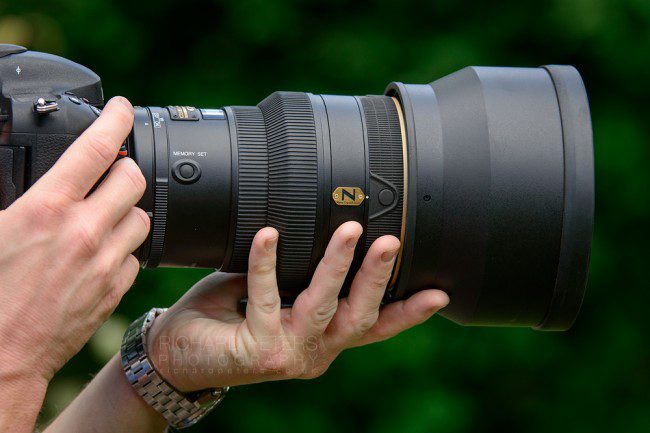
Hand holding the 200 f2
The usual A/M & M/A focus modes are there, but I’ve never really been a fan of this ability to make the focus ring less sensitive to movement, it just doesn’t work as well as I would want. Quite why Nikon ditched the focus ring disengage option from the old 600 AFS II lens I’ll never know as it makes this type of scenario, and general beanbag shooting so much easier. Bad Nikon!
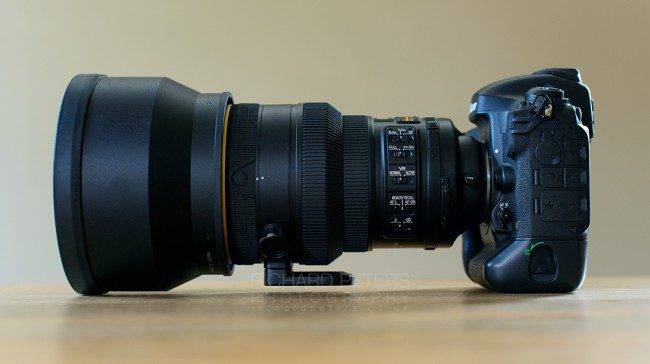
The side profile showing the small foot
If you shoot from a tripod, hide or vehicle, this may all be a none issue. But due to the short focal length and big aperture, you’ll often find yourself needing and wanting to get close, very close. And that often means being on foot, or crawling around on the floor.
‘THAT’ aperture
Let’s get down to business. The reason we all want this lens is for it’s f2 aperture. And what’s not to like, because wide open it allows for incredible subject isolation, and I do mean incredible. Fore and background can be made to blend in to one buttery smooth continuation of each other, but there’s a catch to all this depth of field magic. You have to be very, very, careful shooting at f2 because that depth of field is so narrow it won’t forgive you in the slightest for miss-placing the focus point. What it will do though, is give you surprisingly high shutter speeds and low ISO’s, even if you ‘think’ it’s a dull day!
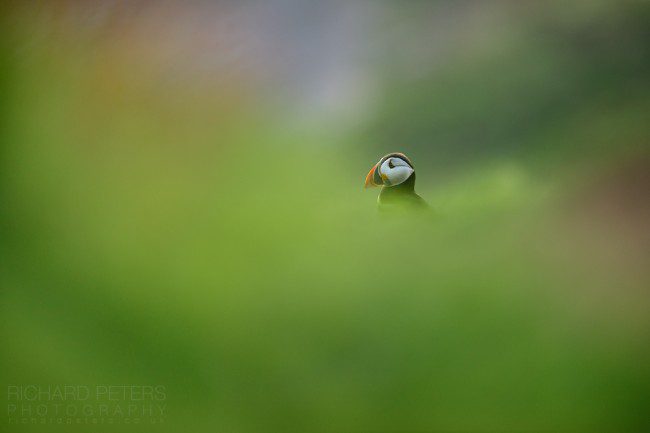
Subject isolation at f2
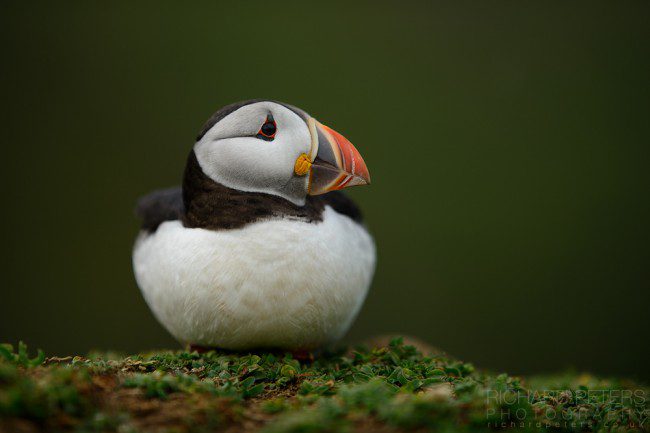
A puffin at rest, isolated at f2
This can make it very hard to photograph wildlife, regardless of whether it’s moving or not. With the puffins, I found my hit rate wide open was very erratic, especially with close subjects. Placing the focus point over a puffins eye was no guarantee the eye would be sharp as on many shots, the cheek was razor sharp and the eye, being sunk back a little, was soft. And I don’t mean ‘I’ll sharpen it back up in Lightroom’ soft, I mean, totally soft. 200mm and f2 is a combination that makes you work for your images, make no mistake. But like anything that’s hard work, the pay off is worth it!
Teleconverters and comparisons
Both the 1.4 and 2x TC’s perform well although both require stopping down a little to make the most of the combinations, as you would expect from any TC use on a telephoto. They do make the lens more flexible, giving you a 280mm f2.8 and 400mm f4 respectively, although not as flexible of course, as something like the 200-400.
I did briefly compare it to the 200-400, although they are two very different lenses for different purposes and each is a compromise of the other in some way. But what I will say is the 200 f/2 with the TC-20EIII, although softer at 400mm wide open (f4), improves as you stop down and, by f8, they’re on a par and I’d maybe even say the 200 f2 actually takes the lead ever so slightly. But, we’re splitting hairs at that point. Ultimately to decide between the two lenses, it would come down to what’s more important, shooting at f2 or having focal flexibility, because the only way to achieve both those goals as optically good as possible, is to have both lenses!
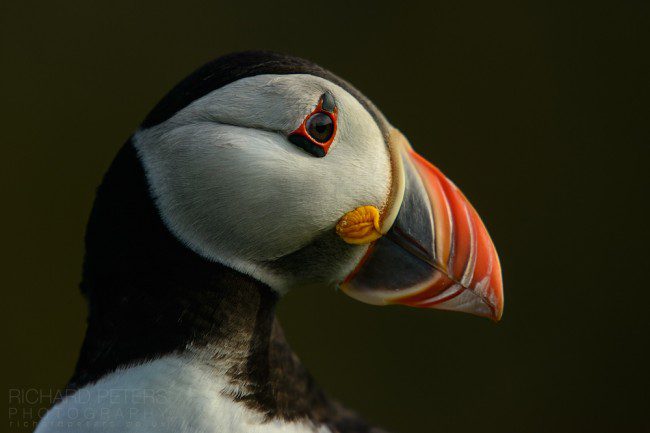
Using the TC-20EIII adds flexibility
What I will say though, and this did surprise me, is with either teleconverter on, there is virtually no slow down at all in focus speed. None. I’ll be honest, I found this quite remarkable, especially coming from my 200-400, which feels very sluggish in comparison. At 400mm, the 200 f2 and TC-20EIII combo is lightening fast. Use the lens converter free and the focus speed from closest to infinity and back is just about the fastest I’ve ever seen in a lens. Quite incredible!
Nikon 200 f2. The verdict.
On paper, this should be a terrible wildlife lens for the most part. If you’re not working from a fixed position it’s awkward to carry and manoeuvre with, plus it can be tricky to pin point the depth of field, especially at f2 with small, close subjects that aren’t completely still. A 200mm prime is also a bit of an awkward focal length for wildlife photography in general. It’s not quite long enough and not quite wide enough. Sure it can be more flexible with teleconverters attached but the reality is, if you own this lens, it’s to shoot at f2.
But here’s the thing. When it all comes together, when you find yourself in a situation in which 200mm is the sweet spot, and you nail the wafer thin depth of field, the end results are sublime and there’s no other lens you’d want on the camera.
As a wildlife photography lens, it’s really quite simple; The Nikon 200 f2 is frustratingly beautiful, and I love it!
Extra information
View more of the photo’s I took with the 200 f/2 during my time on Skomer Island.
I rented the lens here in the UK from Lenses for Hire.
If you want to purchase it, check out Wex Photographic in the UK or B&H Photo in the USA.








